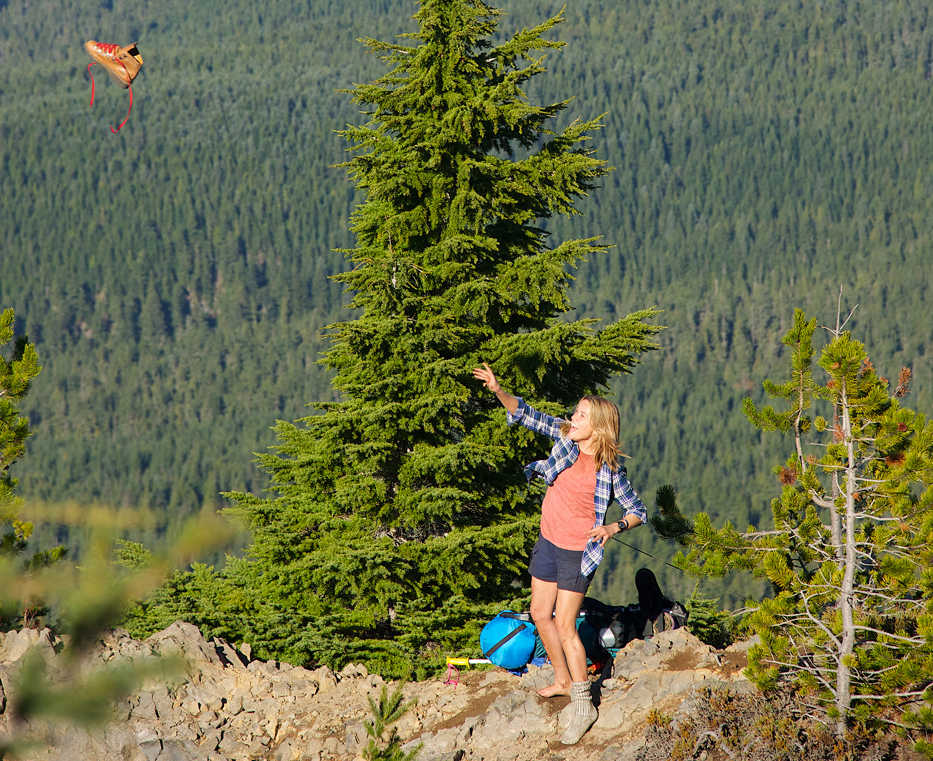NEW YORK — A big, bad pair of hiking boots and the bloody hurt they inflicted on Cheryl Strayed’s feet were co-stars in her book “Wild,” as they were for Reese Witherspoon in the popular movie adaptation that earned the actress an Oscar nomination.
Toenails were taken by the too-small monsters, and both of the boots with the flat red laces wound up at the bottom of a cliff on the Pacific Crest Trail in the opening scene, to be replaced later with a brand-new proper-fitting pair at her next rest stop.
A newbie to thru-hiking, Strayed’s story of her 1,100-mile trek has not only boosted her profile but also reinforced the importance to novices of protecting and supporting their feet.
Danner Boots in Portland, Oregon, created the “Wild” boots for Witherspoon, though the company didn’t make the kind Strayed actually wore. That honor goes to Raichle, later rebranded as Mammut. Danner certainly is reaping the benefits. Its Mountain Light Cascade style for women, the official name, has enjoyed a sales boost, said company spokesman Will Pennartz.
But uninitiated thru-hikers should tread lightly when it comes to footwear; shoes instead of boots might be a better choice.
“You have to respect your feet. Fit and break-in period are two of the most important aspects of finding the right pair of hiking boots. We hope newbie hikers not only take inspiration from Cheryl’s story, but also learn from her initial mistakes,” Pennartz said.
These days, footwear options for long-distance hikers abound. When choosing, consider that your feet are not those of Strayed, Witherspoon or your best friend who raved about a certain brand or style.
“It was painful to watch those scenes with her feet,” said Austin Williams, who hiked 1,600 miles of the PCT in 2008 wearing an ultralight pack and running shoes.
Key to choosing the right footwear, Williams and others advise, is to try on as many different kinds as possible and to be open to changing them up for a different size or type as you go along.
Denise Friend, a footwear expert and merchandising manager for the outdoor retail supplier REI, said a common mistake among newbies is not choosing the right footwear for the right activity: short hike versus backpacking trip, for instance, along with incline, season and terrain.
“Classic and traditional styles still sell well, but the next generation of boots offer better comfort, lighter weight and flexibility,” she said from company headquarters in Kent, Washington. “These new styles require less break-in time and are trail-ready out of the box.”
Williams put up lots of advice for the feet on his PlanYourHike.com after he completed his nearly three-month trek.
“The classic hiking footwear has always been hiking boots. If you have a heavier pack and you roll your ankle and you’re not wearing boots, you’re screwed,” he said from Mendocino, California. “But if you’re wearing a really light pack, a lot of people are finding you don’t really need boots if you’re on a trail. If you’re going off trail it’s still good to wear boots.”
Gear tests for footwear abound if you’re in search of recommendations. A few things to keep in mind:
WEIGHT: What you have on your feet makes a huge difference when you’re hiking 20 to 30 miles a day, Williams said. Lightweight trail shoes, running shoes or ultralight boots will not sap energy nearly as fast as full-blown, clunky hiking boots.
TIME: Footwear rarely lasts for more than 500 miles. You could go through six or seven pairs by the end of a thru-hike. Budget accordingly.
SWELLING: This is inevitable when you hike for 10-plus hours a day nearly every day, week after week, Williams said. The growth can be from a half size to one-and-a-half sizes, especially in desert areas. If you plan to buy all your footwear at once for resupply boxes sent to you along the way, buy a size bigger than your foot no matter what the salesperson tells you, he said.
ADJUSTING SIZES: Wiser than buying all footwear at once is leaving support people with money and telling them the exact kind you like. When it’s time for replacements you can tell them what size to include in your next resupply box.
SOCKS: They fall apart fast, Williams said. Every single resupply box should have at least one pair of new socks. Two or three pairs in each box would be great. Most hikers carry three or four pairs of reasonably fast-drying socks. Change socks at least once a day to let feet dry and help prevent blisters. Cotton takes forever to dry and more technical smart wool socks are pricey.
SHOES VERSUS BOOTS: Shoes are better than boots when your base pack weight is less than 25 pounds, you’re hiking a maintained trail and you don’t require mega-ankle support, Williams said.
GAITERS: These coverings that attach to footwear come in waterproof, lightweight versions. Williams is a huge proponent of gaiters as a way to keep feet dry and debris out of your shoes.

